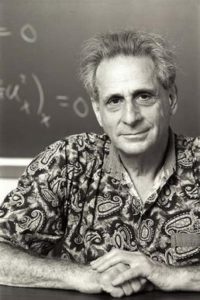Tasks
|
Try the experiment again with a different starting die. What do you notice? |
|
Try the experiment again with a pack of cards, with Jack, Queen, King worth 5. Can you predict which card a friend will land on? How about if Jack, Queen, King are worth 11, 12, 13? |
|
Can you explain why different starting choices result in the same answer? Does this work every time? |
|
Maths
When two people try this experiment, they are highly likely to end on the same die, even if they made different choices of starting die. To begin with the two people will be on different paths but, at some point, the two paths will coincide. With 20 dice the probability two paths coincide is about 80%.
With a pack of cards, when Jack, Queen, King are worth 5, the probability of ending on the same card is around 85%. If Jack, Queen, King are worth 11, 12, 13, then the probability of success drops to 70%. This is because the average number of steps is longer, making it less likely that two paths coincide.
|
History
This idea was originally presented as a magic trick. Ask your volunteer to shuffle a pack of cards and pick a secret number from 1 to 10. The magician then deals out the cards and asks the volunteer to count in their mind. Each card they land on gives the next value to count, until the magician runs out of cards. The magician can predict the volunteer’s final card because they performed the same count, except the magician started on the first card. This trick is called Kruskal’s Count and was devised by American statistician Martin Kruskal. The trick was published in Scientific American Magazine in 1978.
|
People
 Martin Kruskal 1926-2006 Martin Kruskal 1926-2006
Martin Kruskal was an American mathematician and physicist. He is most famous for his work on solitons, short for solitary wave. Solitons are localised waves that don’t merge with other waves. Martin loved games and puzzles, and invented the Kruskal’s Count magic trick. |
 John Pollard 1941-present John Pollard 1941-present
John Pollard is a British mathematician who is most famous for devising algorithms that quickly factorise large numbers. This algorithm assumes two processes will eventually coincide to calculate the factors. Factorising large numbers is important in code breaking. |
|
Applications
The idea that two process eventually coincide can be used to calculate the factors of large numbers. This is important in cryptography and code breaking because many modern codes use large numbers to send secret messages, but these codes can be broken if you know the original factors.
|
Maths at Home
Perform this trick at home with any pack of cards. Ask your volunteer to shuffle the pack and pick a secret number from 1 to 10. Explain that you will count through the deck, and the volunteers secret number becomes their first chosen card. Explain that the volunteer should use that card’s value as their new number and to repeat the process until you’ve run out of cards. Despite this seemingly random process, you can predict the volunteers last chosen card. To do this, simple perform the same process, starting with the first card. There is an 85% probability you will land on the same final card.
Another fun variation is to use a piece of text instead of cards. For example, pick a word from the first sentence from this piece of text from the hitch-hiker’s guide to the galaxy:
“It is known that there are an infinite number of worlds, simply because there is an infinite amount of space for them to be in it. However, not every one of them is inhabited. Therefore, there must be a finite number of inhabited worlds. Any finite number divided by infinity is as near to nothing as makes no odds, so the average population of all the planets in the Universe can be said to be zero. From this it follows that the population of the whole Universe is also zero, and that any people you may meet from time to time are merely the products of a deranged imagination.”
Use the length of the word as your value. Count through the paragraph until you reach your next word, and repeat until you reach your final chosen word. In this case, your final chosen word would be ‘products’.
|